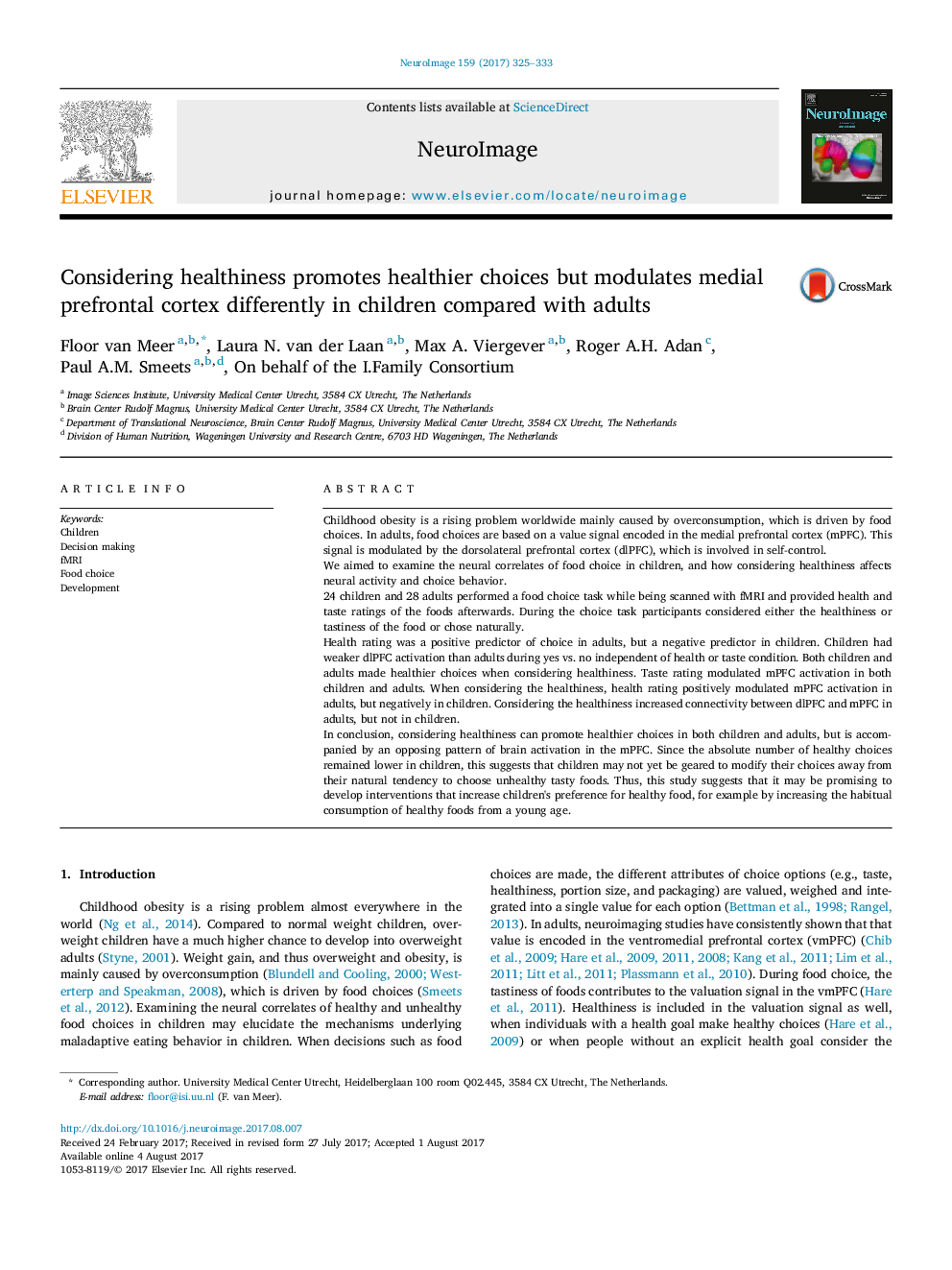| کد مقاله | کد نشریه | سال انتشار | مقاله انگلیسی | نسخه تمام متن |
|---|---|---|---|---|
| 5630859 | 1580851 | 2017 | 9 صفحه PDF | دانلود رایگان |
- Health rating positively predicted food choice in adults but negatively in children.
- Both children and adults made healthier choices when considering healthiness.
- Children made less healthy choices than adults overall.
- Adults had more dlPFC activation than children during food choice.
- Health rating negatively modulated mPFC in children when considering healthiness.
Childhood obesity is a rising problem worldwide mainly caused by overconsumption, which is driven by food choices. In adults, food choices are based on a value signal encoded in the medial prefrontal cortex (mPFC). This signal is modulated by the dorsolateral prefrontal cortex (dlPFC), which is involved in self-control.We aimed to examine the neural correlates of food choice in children, and how considering healthiness affects neural activity and choice behavior.24 children and 28 adults performed a food choice task while being scanned with fMRI and provided health and taste ratings of the foods afterwards. During the choice task participants considered either the healthiness or tastiness of the food or chose naturally.Health rating was a positive predictor of choice in adults, but a negative predictor in children. Children had weaker dlPFC activation than adults during yes vs. no independent of health or taste condition. Both children and adults made healthier choices when considering healthiness. Taste rating modulated mPFC activation in both children and adults. When considering the healthiness, health rating positively modulated mPFC activation in adults, but negatively in children. Considering the healthiness increased connectivity between dlPFC and mPFC in adults, but not in children.In conclusion, considering healthiness can promote healthier choices in both children and adults, but is accompanied by an opposing pattern of brain activation in the mPFC. Since the absolute number of healthy choices remained lower in children, this suggests that children may not yet be geared to modify their choices away from their natural tendency to choose unhealthy tasty foods. Thus, this study suggests that it may be promising to develop interventions that increase children's preference for healthy food, for example by increasing the habitual consumption of healthy foods from a young age.
Journal: NeuroImage - Volume 159, 1 October 2017, Pages 325-333
